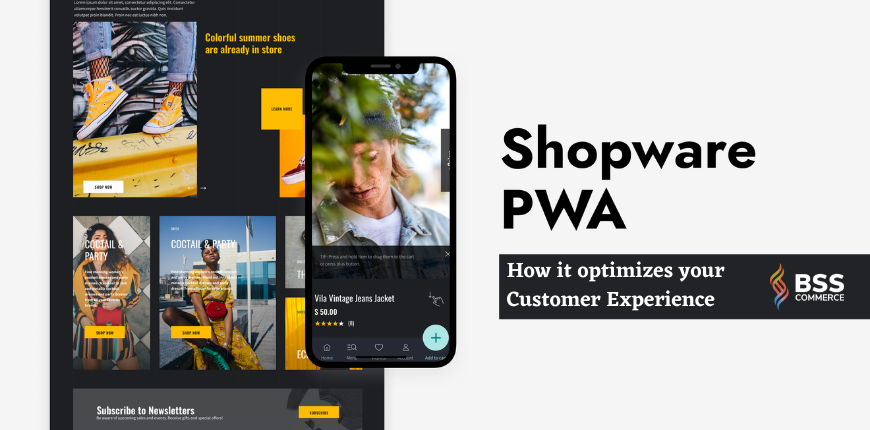Are you a PWA owner who aspires to give your customers the best eCommerce experience? Shopware PWA might be the exact solution you are looking for in 2022!
We are about to accompany you on a journey to discover everything you need to know regarding Shopware PWA. We believe that at the end of it, you will be a Shopware platform expert, and ready to apply this technology to your business. Just to be sure, we have also prepared some pretty solid advice about PWA and eCommerce in general. Stay tuned to bring them all home!
Introducing Shopware 6
Table of Contents
What is Shopware 6?
To understand what Shopware 6 is, it would be necessary to dive into the concept of Shopware first.
Shopware, founded in 2000, is a German open-source platform built especially to service digital businesses. More than 20 years of constant development and 80,000 satisfied customers later, Shopware is now on its way to becoming one of the most significant eCommerce ecosystems anywhere in the world.
The one element which sets Shopware apart is how it grows and adjusts itself based on actual user experience. The developers of Shopware had intended to personalize every Shopware online stall with its unique background and stories. Thanks to the Shopware platform’s capabilities, they did not only achieve that goal but also push the technology to always perform at the highest level.

It’s time we got back to our original point: What is Shopware 6?
Shopware 6 is one of the latest eCommerce updates from Shopware ecosystems. Being a platform itself, Shopware 6 is designed to expand the original frameworks of PWA sites, such as Vue.js and Symfony. It has so far proven itself to be a highly efficient and potential platform, capable of providing value-driven solutions to online businesses.
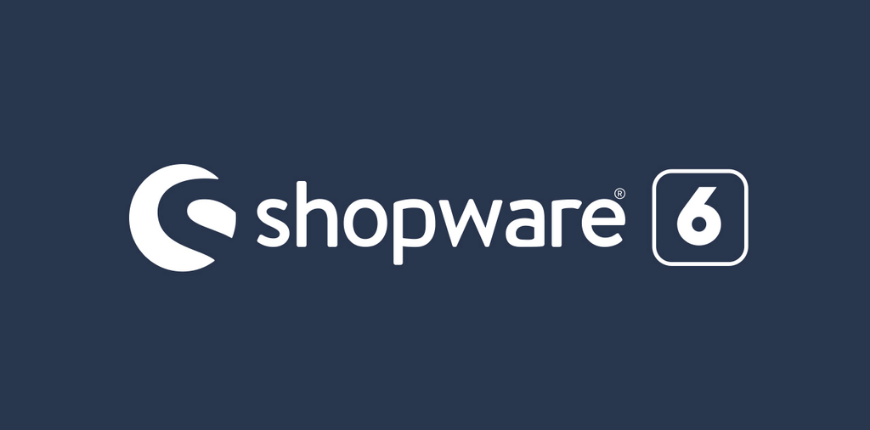
All versions of Shopware 6 frontend have full-stack architecture, and here is where the Shopware PWA comes in. Shopware PWA, with maximum compatibility with all Shopware 6 features, can be integrated easily by every developer. In Shopware 6’s backend, we’ve got a headless API, which offers a specific API based on different data requirements.
Shopware 6 certainly has all the right components required for a powerful eCommerce project. We are looking forward to its future with excitement as Shopware 6’s on its way to building a new generation of the Shopware platform’s technology.
Shopware 6’s Unique Advantages
Strong and resourceful, Shopware 6 has what it takes to lead your brand to the upper tier. How though? Scroll down to see some of the best features of Shopware 6.
Unrestricted Creativity
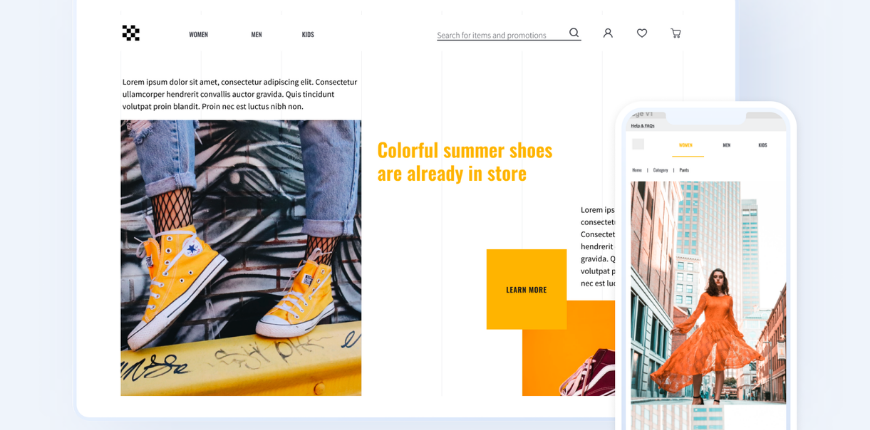
With separated frontend – backend design, Shopware 6 allows flexible choices of visuals and applications. Therefore, you will not have to worry about the backend or overall functionality during the design process. Let yourself be creative, limitlessly!
Landscape Complexity
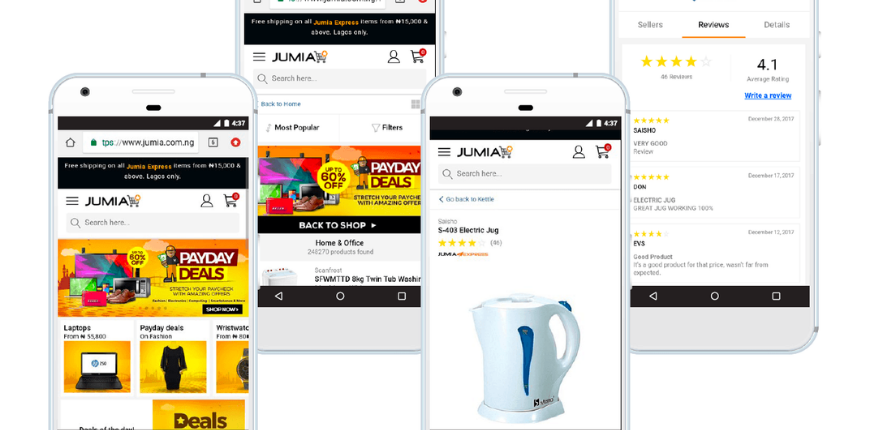
A big eCommerce landscape can be exhausting to control with all the technical details and maintenance involved. Shopware 6 caters to this need by directly integrating with your WMS, PIM, or other logistics systems, and gets the job done for you. The solution makes sure that the technology will adapt to what you, the customers, aim for. Not the other way around.
Swift combination

This is the part where marketing professionals fall in love. With Shopware 6, you can install your own set of tools, which you usually use for managing, creating, tracking, and analyzing, easily into the system. You will be able to work and adjust comfortably, instead of chasing after changes every time an update comes up.
Click here to find out even more awesome factors of Shopware 6: https://bsscommerce.com/blog/the-latest-version-shopware-6/
Meet Shopware PWA – the best Shopware 6 solution
What is Shopware PWA?
We are now familiar with the concept of PWAs, or Progressive Web Applications, as well as Shopware 6. It’s time to discuss Shopware PWA – the soul of Shopware 6 technology.
Shopware PWA is one of the latest creations from the Shopware platform. It is, to put it simply, a frontend solution designed specifically for Shopware 6.
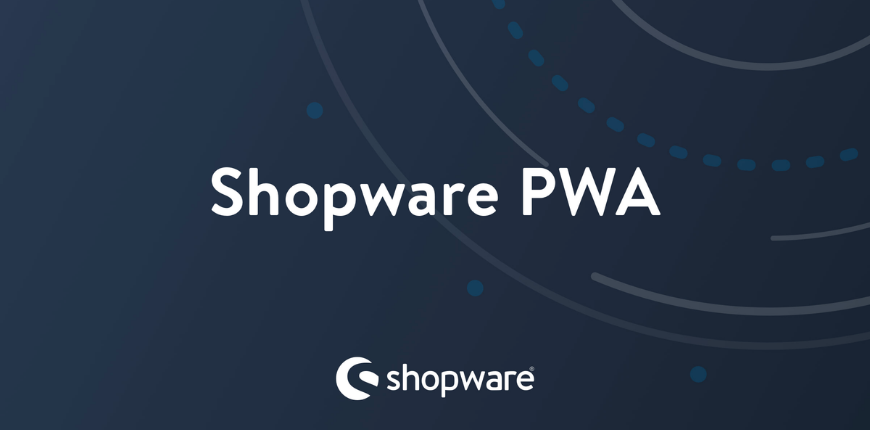
Shopware PWA’s main purpose is to make full use of Shopware 6’s headless API approach. It is entirely separated and stateless, and as a result, it can be deployed and replicated whenever necessary. Handy, yeah?
Let’s talk technical a bit. Shopware has spent a long time setting Shopware PWA up from scratch, intending to incorporate the most cutting-edge approaches from Vue and JavaScript. They include logic decomposition, server-side rendering, and code isomorphism. This dedication has its reason: The developers want Shopware PWA to become something much more than just a frontend solution. Shopware PWA possesses the key to a whole new future of application architectures, where individual user experience is systemized and utilized better than ever. Experience-driven eCommerce brands will no doubt be the first ones to enjoy the fruits born from such a level of high tech.
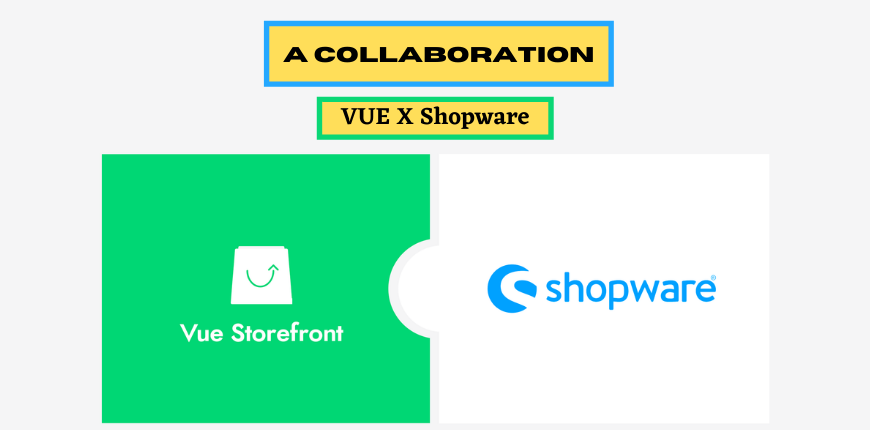
Fun fact: the project of Shopware PWA is a collaboration between Shopware and Vue Storefront. Vue Storefront has handled the speed factors and made sure Shopware PWA can work efficiently and of course, quickly. Meanwhile, Shopware is responsible for providing a great API. Needless to say, this decision has worked out perfectly. Shopware proudly stated that Shopware PWA “got the most out of the best technologies and standards” from both sides, and it is expected to bring about amazing PWA solutions like supporting plugins, CMS integration, checkout, payment, and many more.
What technologies does Shopware PWA use?
Like most standards PWAs, Shopware PWAs are the combination of JavaScript, CSS, and HTML. PWAs, therefore, bore the appearance of common websites but possesses all the function of mobile apps, with push notifications and offline mode being two of such.
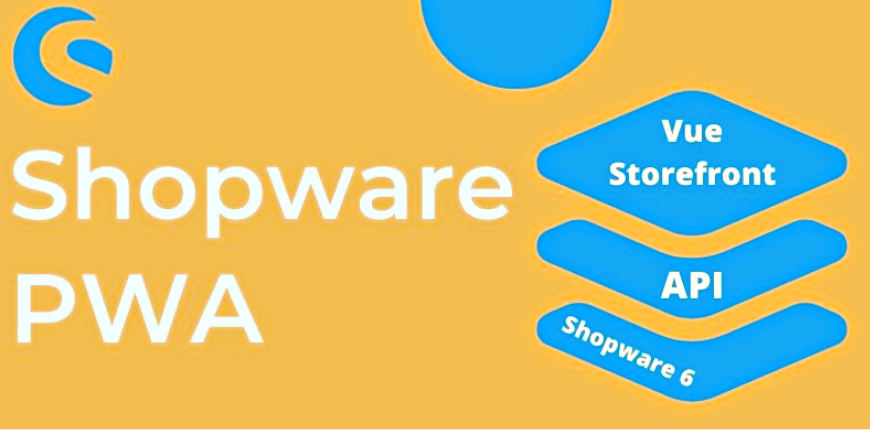
A Shopware PWA stack includes:
- Frontend: This area is where the PWA runs independently on its server only and works with user interactions.
- API layer: API monitors how users interact with the PWA. As the name suggests, it’s a communication “layer” between customer-facing functions and the Shopware Core.
- Backend: Lies the Shopware 6 itself.
Briefly about VUE Storefront
It will be a sore lacking if we don’t talk about Vue Storefront, the very partner that helped actualize Shopware PWA. VUE is also an open-source frontend, built using headless eCommerce architectures. VUE allows developers to replace the frontend without having to touch the backend and operates more smoothly than most PWA solutions available today. This explains why VUE Storefront’s great reputation has been spreading widely in the digital realm recently.

Here are some impressive numbers from VUE Storefront to prove its positive impact on different targets of online businesses:
- Mobile engagement: 60% higher
- 2G loading speed: 2 seconds maximum
- App size reduction: Up to 90%
The mutual connection with Vue Storefront is an undeniably great decision of the Shopware platform. VUE Storefront has certainly brought many worthy contributions to the table and helped Shopware PWA become even more effective.
The best PWA technology breakdown on the Internet is waiting for you at: https://bsscommerce.com/blog/pwa-future-of-ecommerce/
“Okay, so why do I need Shopware PWA?”
That is a very good question, indeed. Let’s look into the strengths and advantages the Shopware platform offers to see if Shopware PWA is worth your attention or not.
Shopware PWA’s strengths
Lightning speed

One of the most critical faults for every eCommerce platform is the delayed loading problem. Did you know that each additional second of loading could cost you around 4.42% in conversion rates? This fatal problem, however, will bother you no longer, thanks to the high performances of Shopware PWA.
It is not at all an exaggeration to say that Shopware PWA’s got breakneck speed. This is made possible by using the advanced techniques called “data prefetching” and “edge caching”. Basically, the Shopware platform brings the data closer to the users’ devices, which enables the info to be fetched straight from said devices instead of from a server with a network. Just like that, now the loading time drops to only milliseconds and works perfectly with or without connections.
Shortened process
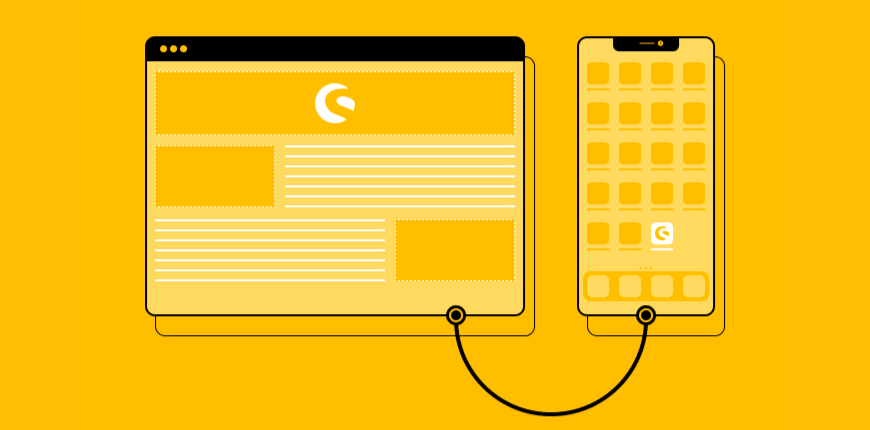
The restocking procedure can be extremely complicated and demanding to eCommerce businesses. Knowing this situation, Shopware PWA has come up with some amazing technologies to handle it smartly.
For example, digital brands used to have to put all the out-of-stock products on a list before contacting and getting them from the warehouses. But now, the Shopware platform will simply bring the webshop to the shelves, and cut out all the in-between steps. Another user-friendly function it offers would be the barcode scanner option, which makes it a thousand times easier to add items to the cart and pay, integrating available hardware such as cameras on the customers’ mobile devices.
Eye-catching visualization
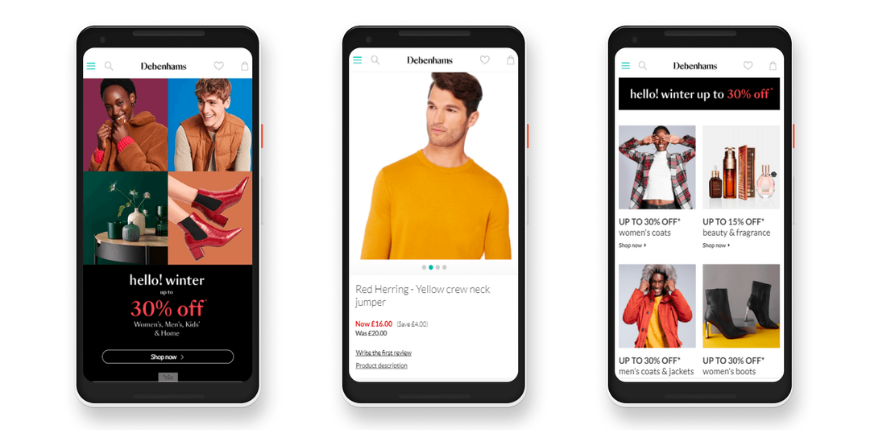
The more PWA sites become popular, the tougher the competition is, and that means you would want your PWA to impress every visitor at first glance. Shopware PWA can do that perfectly with its custom design implementations. Dedicated to assisting owners in realizing their ideas, the Shopware platform applies only the top frontend tools, like Vue.js and Nuxt.js frameworks, a resourceful UI library, as well as API exposing data to the frontend. Trust Shopware PWA to turn your dreams into practice with ease!
Marketing potentials

There’s no better way to skyrocket your brand’s reputation than using PWAs, especially Shopware PWAs. The Shopware platform comes with many sales and analytics tools, which are the backbones of any promoting activities. PWAs also possess SEO advantages on search engines in general. This means all it takes is a simple click from you to make the perfect marketing campaign happen.
Suitable for enterprise eCommerce
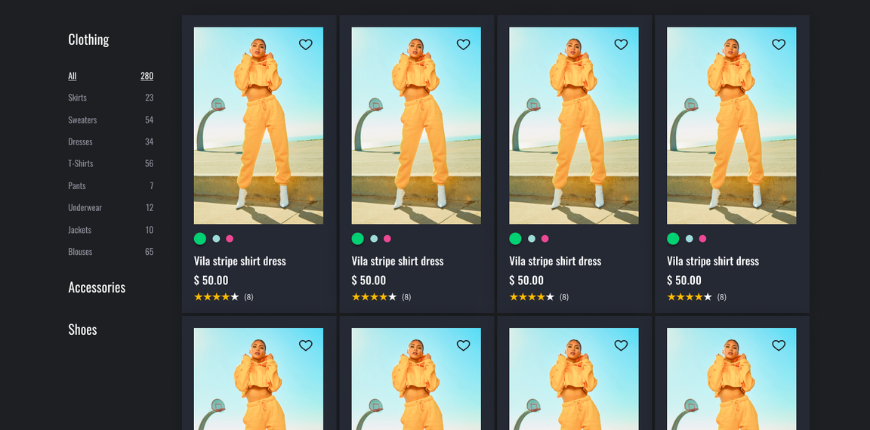
Shopware PWA is not only for small and medium eCommerce businesses. The technology can be a great help to big (and giant!) enterprises with its multi-functional assets. With these companies, the problems are on a much bigger scale, since they have to manage many platforms and applications at the same time. The Shopware platform covers this by organizing closed store-to-warehouse management systems, categorizing product information, etc. No matter how messy it can get, Shopware PWA is here to save the day.
What makes Shopware PWA stand out?
As we have mentioned above, Shopware PWA is developed by Shopware and its partner, Vue Storefront. With years of experience and professional practices, the two teams come through with creative solutions and build Shopware PWA in an unprecedentedly sophisticated manner.
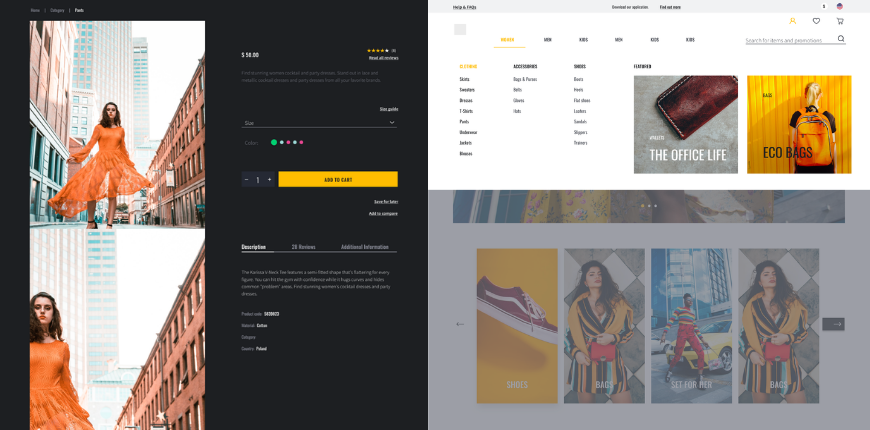
We can see that in the architectural details like plugin support, the CMS system, or the checkout processes. Furthermore, PWA owners can expect the developers to work on updating constant new implementations, such as theming systems or an internal API. With that being said, in the present and near future, eCommerce brands who put their trust in Shopware will reap the incredible benefits of simplified communication with the Shopware APIs, third-party plugins, bundling procedures, code reusability, and beyond.
Check out some inspiring brands and their successful PWA journeys: https://bsscommerce.com/blog/pwa-examples/
Planning a Shopware PWA? Read these tips first
We know that you are excited and can’t wait to start. But be patient, and read our 3 tips below first. They are going to be of great help – promise!
Prepare to get complex

One thing you need to keep in mind here is that the new headless approach will require a much more complex server infrastructure. Your team is in for some heavy development and maintenance, which means you should prepare yourself and make sure you are ready to handle what it takes.
Right investment is key

It all comes down to the expenses at the end of the day, so think twice before you make any investment here. Shopware PWA, or any PWA for that matter, can cost a decent amount due to the human resources and toolset needed from the side. The results are definitely worth every penny though. You just have to be smart about it.
Don’t be shy, and get professional help
You can certainly set up the Shopware PWA with a skilled crew by your side, but we would highly recommend professional assistance. An experienced team will be an amazing choice since they can work simultaneously in several areas, and have enough skills to solve potential problems. If you want the implementation to go smoothly and keep the PWA running in the long term, make sure to seek help from the right place.
BSS Commerce is an excellent choice for Shopware PWA development. Choose us to accompany your adventure with Shopware PWA, and have the exceptional user experiences that will boost your business to a new summit delivered to your door. You can never go wrong with the best technology from the Shopware platform and the trusted expertise of BSS Commerce. From strategic consulting to development, from eCommerce acceleration to support and maintenance – you want it, we offer it. The perfect eCommerce solution you aim for is now within reach of your hands.
Take a tour around our Shopware Development Hub right now: https://bsscommerce.com/shopware-development.html
Wrapping Up
Progressive Web App is becoming the most household technology within the eCommerce world nowadays. The pressing question is no longer “Should we apply PWA to our brand?”, but “What can we do to make our PWA the best one out there?” Shopware 6, accompanied by Shopeware PWA, is the ultimate tool that can handle the job for you. Be one of the first to make use of it and stay on top of the digital business world in 2022.
BSS Commerce is here to support you always – so don’t hesitate to contact us and let us be a part of your Shopware PWA story: https://bsscommerce.com/contact
Follow our blog to read daily updates about eCommerce, web technology, and more. We’ll meet again in the next article.
